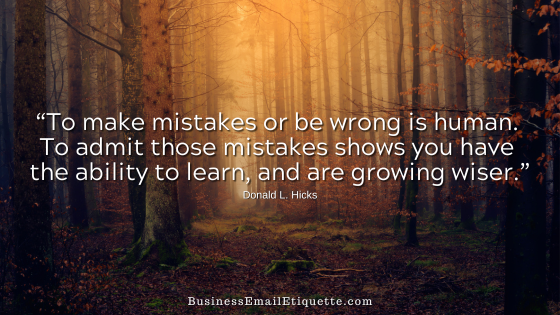Should You Use Emojis in Business Email?

So when flipping through the channels on T.V., I stopped on a discussion of emojis and email. While I’ve typed about this for years, the “study” referenced had a different angle—more along the lines of the differences in how men and women communicate. In business emails, professionalism is not affected by gender.
When I talk about emojis and business emails, I view this subject from a professional perception point of view. And the study did agree for the most part:
Exactly. However the bulk of this study is based on women vs. men and that they use and view emojis differently. I get that. Contrary to the latest trends, men and women are different. Including in the way they communicate.
Is there a place for emojis in business emails? Several visitors asked for further clarification on business email and emoji use this week. I wonder if these requests correlate with this study and the ensuing conversations.
One of the requests noted how many companies are increasingly using emojis in their mailings. You may have noticed this in the Subject line of newsletters and promotional mailings, not the day-to-day business communications.
Stats reflect that newsletters or mailings that utilize emojis in the subject field gain more attention. A 29% increase in open rate. Because they catch your eye, this makes sense if there’s an inbox chock full of emails that cause the user to scan.
Those subject fields will stand out. But in my opinion, overuse can cause your email to appear less serious or even spammy.
A Right or Wrong Way to Use Emojis
Regarding daily business email communications, the basic guideline is to use emojis or emoticons sparingly and with discretion — if at all. However, some have argued that there is, under no conditions, a place to use emojis in a business email.
Professionalism and formality rule the day in some fields, professions, and communications, and there is no place for emojis. Cartoonish characters are just not acceptable.
With that said, each business and corporate culture is different. Therefore, not all the guidelines I discuss on this blog are hard and fast rules every business must abide by.
Using Your Better Judgement
As with anything, using your better judgment is vital. Business Email Etiquette is a set of guidelines. These are not “set in stone” rules. Discretion is key.
In the case of emojis, I use just one, a winky, and sparingly in my business email. More on that later. Never have I used emojis during the first contact.
Nor do I use them with those I prefer to maintain a strictly professional tone. I’m pretty easygoing, and “strictly professional” is the exception, not the rule.
Probably, the fact I use them at all is a testament to always wanting to be approachable. While I believe in emailing with the appropriate formality at all times, I do not object to emojis being used or personality being shown as relationships grow.
Nor does it bother me when folks who email me use them. That is their choice; in most cases, they use emojis to reflect positive emotions. So, who could be upset with that?
Stick with Positivity
In the case of a frown emoji, I have never integrated that into a business email. Probably because that emoticon is rarely taken in the context it is meant. It could be perceived as pouty or minimizing the topic one is unhappy about. (Plus, I don’t frown!)
When I receive an email containing comments I disagree with, I use my vocabulary to relay any disappointment or disagreement. But, come to think about it, I’ve never thought to resort to a frown emoji in email.
But I do use a winky-smiley ( 😉 ) here and there. Here’s why.
I may add a winky to reflect that I understand when a client is frustrated. However, in most cases, I use a winky when I have to correct or coach those I work with about something they were unaware of.
By using a winky, I can “lighten” the correction. This also lets the recipient know I am providing the information with the best intentions. Doing so softens my “advice.”
Softening Corrections or Advice
My main gig is being a consultant and coach; folks contact me about frustrating and intimate issues. When needed to soften a correction or mistake or to relay that I understand their dilemma, using a winky in an email often results in the recipient being more open to the correction given.
For example:
Statement A — no winky:
If you do not take into consideration the basics of business email etiquette, the perception of your business’s credibility could be at stake. My intent is to make sure that you make a positive impression.
Statement B — including a winky:
If you do not take into consideration the basics of business email etiquette, the perception of your business’s credibility could be at stake. My intent is to make sure than you make a positive impression. 😉
See how those two extra keystrokes further help to intimate I have your best interest at heart?
When to use an Emoji?
Here are a few examples of when I will use an emoji/emoticon in my business email communications:
These are just a couple of examples where adding a simple emoticon allows you to soften an email’s tone. For more information on emoticons history, check out the Emoticon Wiki page on the subject.
Do What Works for Your Business
And your market, business culture, and personality. Take into consideration how well you know the person you are communicating with. Understand the level of formality required.
If your business culture is more relaxed or you prefer to show some personality, use emojis when appropriate. If you do not feel that emojis fit your business’s formality level, then do not use them.
There is a time and place for everything. Use your discretion based on what works best for your business.






